Are sensory processing issues affecting your child’s success at home and at school?
Help your child process the world, comfortably
We believe that you will see changes within the first TWO WEEKS of therapy.
Tailored enrichment therapy is designed to boost brain plasticity in targeted brain functions
• Emotion (motivation to engage with other people),
• Self-awareness (where do I fit in space and this social world?),
• Fine motor (can I control my voice box, lips, breathing, etc.?),
• Auditory processing (can I hear myself speak?),
• Memory and learning (vocabulary, sentence structure),
• Mental image (can I picture what I want to say in my mind?), etc.
As these tools improve in the brain, the bottlenecks that slowed down natural speech development should fade away.
Sensory Enrichment Therapy™ helps normalize sensory processing
Does your child show signs of inattention or lack of focus?
Does your child have a hard time paying attention in school?
Does your child need extra help completing assignments?
• Reacting strongly to different textures of clothing
• Overresponding to loud sounds (washing machines, hair dryers or sirens)
• Oversensitivity to odors
• Withdrawing from light and unexpected touch
• Challenges with certain movements
• Physical symptoms: clumsiness, poor balance, delayed fine motor control
• Standing too close to others
• Dislike of teeth-brushing, hair washing, or nail cutting
• Gagging and refusal to eat textured foods
• Avoidance of messy textures such as dirt or lotion
• Noticing faint background noises
Parents have noticed improvements with Mendability
• Increased ability to interact with peers
• Managing aggression
• Remaining calm in crowded spaces
• Eating a variety of textured foods
• Use of loud hair dryers without discomfort
“I completely stopped a major meltdown today!
He had stripped off his clothes and was in full freak-out mode, it stopped in about 15 seconds. The best part was my husband witnessed the whole thing.
I keep saying, you saw that right? It works!!”
- Sarah D. (New York)
parent of a 4-year-old boy
“My major concern for [my son] was his behaviour while waiting at airports and on the plane. I want to share my joy - our trip was really fun filled, and the main reason was that there was a lot of change in [my son's] sensory needs. Last year's trip was miserable, his aggression was so bad that my arms were bruised due to his biting.
[This year he] behaved so well. He was very calm in crowds, tolerated sounds and noises for sometime. He didn't bother us at all during the flights and at the airports.
This is all due to Mendability!”
- Ayesha A. (Pakistan)
parent of a 10 year old boy
The sensory connection
Research has shown that like in many other neurological issues, sensory processing problems in the brain may be a common condition for children with behavior issues such as tantrums and disrespectful attitudes.
More than a sensory diet
A change in the way the brain processes the sensory world
The good news is that the brain is like a muscle, the more you use it the better it does.
And just as a workout can help develop better muscle tone, exercising the sensory pathways in the brain can help the brain improve its ability to process the real world, comfortably.
A workout for your child’s brain
Family-focused multi-sensory activities proven to help
Sensory Enrichment Therapy uses a safe multisensory approach to help children with sensory processing issues.
Mendability is delivered online as a set of customized daily exercises.
You’ll increase your child’s brain plasticity to improve daily life from home with simple touch, smell, temperature response, and balance exercises.
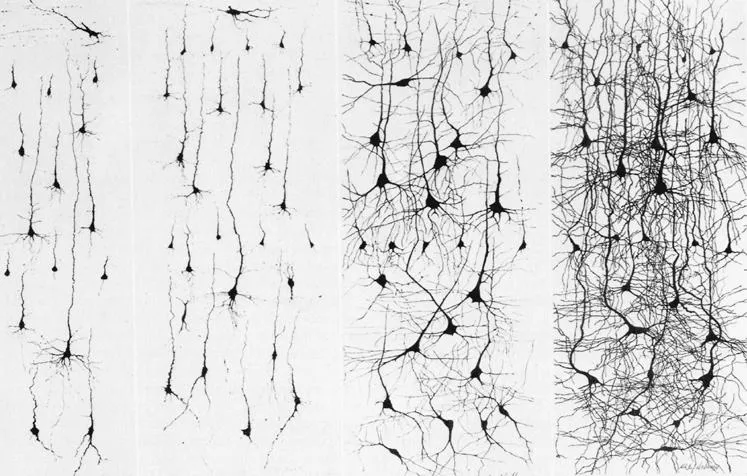
More than a sensory diet
Sensory exercises target areas of attention and focus in the brain to foster neuron connections and increase brain growth.
A similar approach is used to treat ADHD.
Sensory Enrichment Therapy
Sensory Enrichment Therapy is a subset of Environmental Enrichment, which is the field of neuroscience that looks at the plasticity of the brain and the types of experiences (cognitive, sensory, social, motor, etc.) that can have an impact on brain development and brain function.
With Sensory Enrichment Therapy we focus on sensory and motor experiences because they are the ones that have the most clinical evidence showing a positive impact.
Mendability developed Sensory Enrichment Therapy as program based on daily, short, hands-on games designed to trigger a boost in activity and growth in targeted brain functions.
The program is updated every two weeks based on the participant's response, progress, and goals.

Behavior and Environmental Enrichment
Animal research suggests that Environmental Enrichment and enhanced Multisensory Stimulation can impact behaviors.
Utsunomiya R, Mikami K, Doi T, Choudhury ME, Jogamoto T, Tokunaga N, Ishii E, Eguchi M, Yano H, Tanaka J. Rearing in an Enriched Environment Ameliorates the ADHD-like Behaviors of Lister Hooded Rats While Suppressing Neuronal Activities in the Medial Prefrontal Cortex. Cells. 2022 Nov 17;11(22):3649. doi: 10.3390/cells11223649. PMID: 36429076; PMCID: PMC9688563.
Coopersmith R, Weihmuller FB, Kirstein CL, Marshall JF, Leon M. Extracellular dopamine increases in the neonatal olfactory bulb during odor preference training. Brain Res. 1991 Nov 8;564(1):149-53. doi: 10.1016/0006-8993(91)91365-8. PMID: 1777817.
Corredor K, Duran JM, Herrera-Isaza L, Forero S, Quintanilla JP, Gomez A, Martínez GS, Cardenas FP. Behavioral effects of environmental enrichment on male and female wistar rats with early life stress experiences. Front Physiol. 2022 Sep 26;13:837661. doi: 10.3389/fphys.2022.837661. PMID: 36225294; PMCID: PMC9548697.
Batistuzzo A, de Almeida GG, Brás TS, Zucato VP, Arnold AJT, Giannocco G, Sato JM, Yamanouchi LM, Dias E, Lorena FB, do Nascimento BPP, Bianco AC, Ribeiro MO. Multisensory Stimulation Improves Cognition and Behavior in Adult Male Rats Born to LT4-treated Thyroidectomized Dams. Endocrinology. 2022 Sep 1;163(9):bqac105. doi: 10.1210/endocr/bqac105. PMID: 35914267; PMCID: PMC9354969.
Groß C, Serrallach BL, Möhler E, Pousson JE, Schneider P, Christiner M, Bernhofs V. Musical Performance in Adolescents with ADHD, ADD and Dyslexia- Behavioral and Neurophysiological Aspects. Brain Sci. 2022 Jan 18;12(2):127. doi: 10.3390/brainsci12020127. PMID: 35203891; PMCID: PMC8870592.
Hobbiesiefken U, Mieske P, Lewejohann L, Diederich K. Evaluation of different types of enrichment - their usage and effect on home cage behavior in female mice. PLoS One. 2021 Dec 23;16(12):e0261876. doi: 10.1371/journal.pone.0261876. PMID: 34941949; PMCID: PMC8699725.
Chan YS, Jang JT, Ho CS. Effects of physical exercise on children with attention deficit hyperactivity disorder. Biomed J. 2022 Apr;45(2):265-270. doi: 10.1016/j.bj.2021.11.011. Epub 2021 Nov 29. PMID: 34856393; PMCID: PMC9250090.
Ball NJ, Mercado E 3rd, Orduña I. Enriched Environments as a Potential Treatment for Developmental Disorders: A Critical Assessment. Front Psychol. 2019 Mar 6;10:466. doi: 10.3389/fpsyg.2019.00466. PMID: 30894830; PMCID: PMC6414413.
Normann MC, McNeal N, Dagner A, Ihm E, Woodbury M, Grippo AJ. The Influence of Environmental Enrichment on Cardiovascular and Behavioral Responses to Social Stress. Psychosom Med. 2018 Apr;80(3):271-277. doi: 10.1097/PSY.0000000000000558. PMID: 29360667; PMCID: PMC8283515.
Human translation
What we have done is to translate animal model protocols into short, fun, hands-on games you can do at home, at school or in your treatment facility.
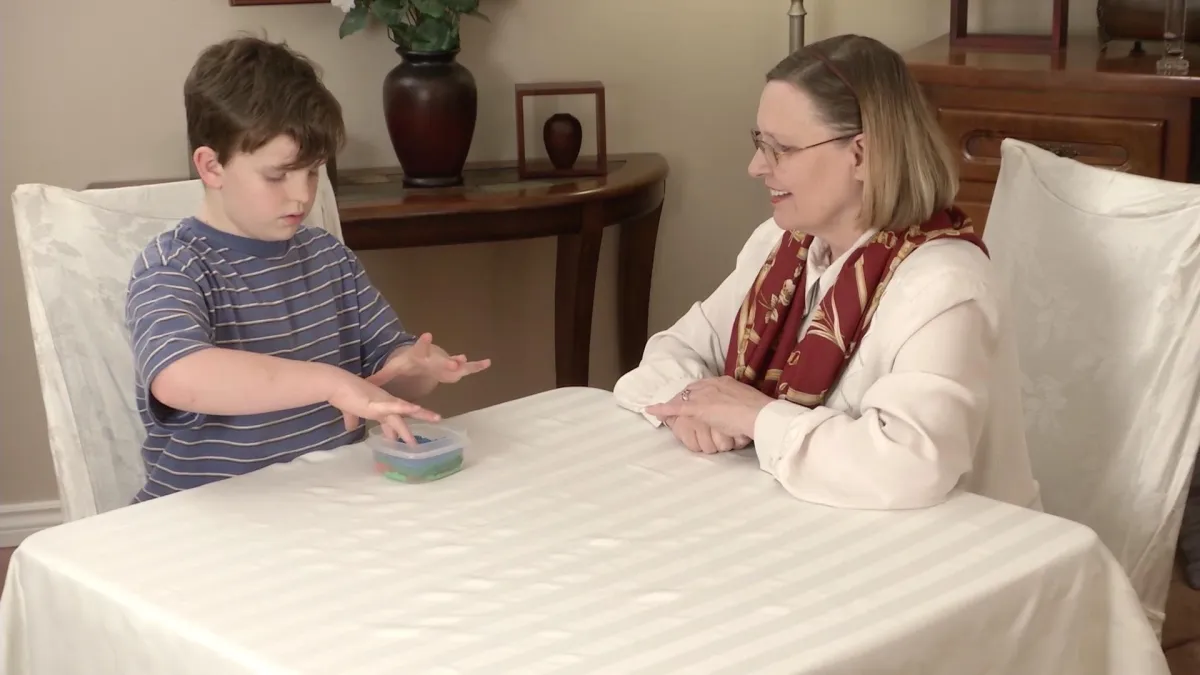
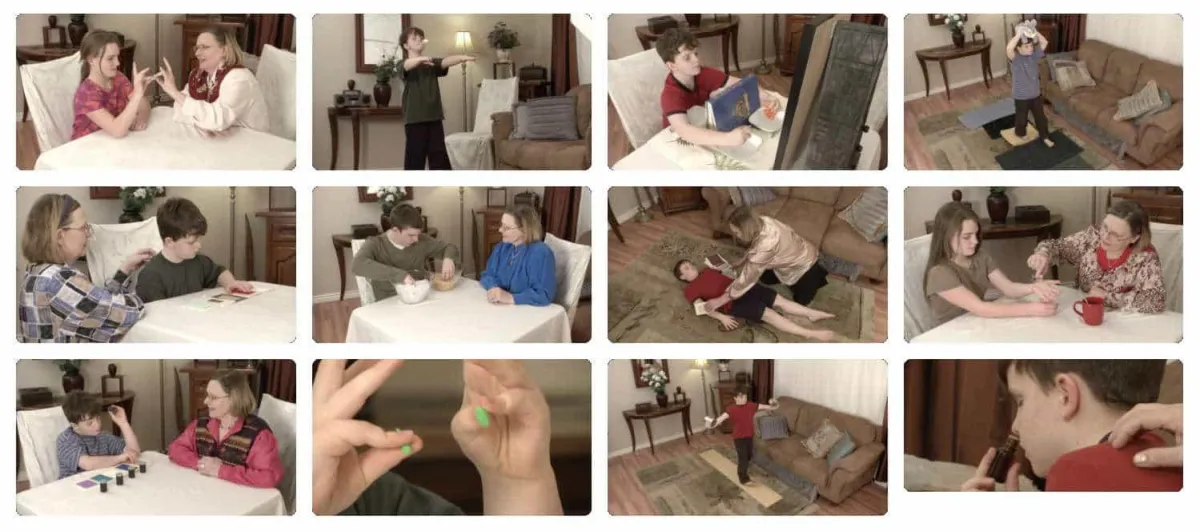
More questions? More examples of games?
Improved Attention
Poor attention span in ADHD results from a combination of:
- neurochemical deficits (dopamine and norepinephrine),
- functional differences (imbalanced DMN and TPN activity), and
- structural challenges (delayed maturation of the prefrontal cortex).
These factors make it difficult to initiate, sustain, and regulate attention, especially for tasks that are repetitive or lack intrinsic interest.
In clinical studies, it has been shown that Sensory Enrichment therapy can improve attention span in 6 months by an average of 10%.
This means that in a year, what used to be a major problem is now a minor problem, or what was a minor problem is now maybe a problem.
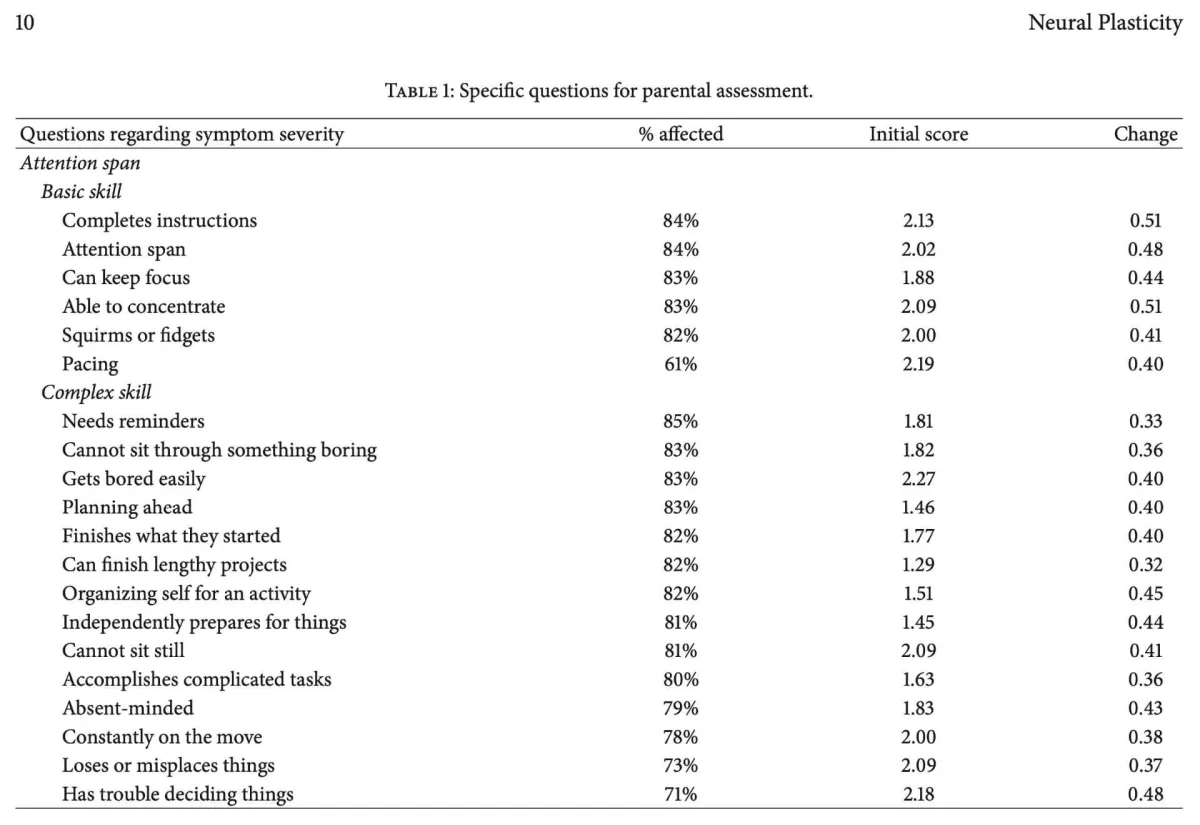
The table above shows the areas tracked by the program and by how much they changed on average over a population of 1,002 children aged 1-18. The scores are change are measured on a scale of 1 to 5.
Enhanced Motor Skills:
Our sensory enrichment activities are designed to improve coordination, balance, and fine motor skills by creating new connections in the brain through novel sensory experiences.
Below are the improvements measured in motor skills in 1,002 children aged 1 to 18, after 6 months of Sensory Enrichment Therapy. The study was published in Neural Plasticity in 2016.
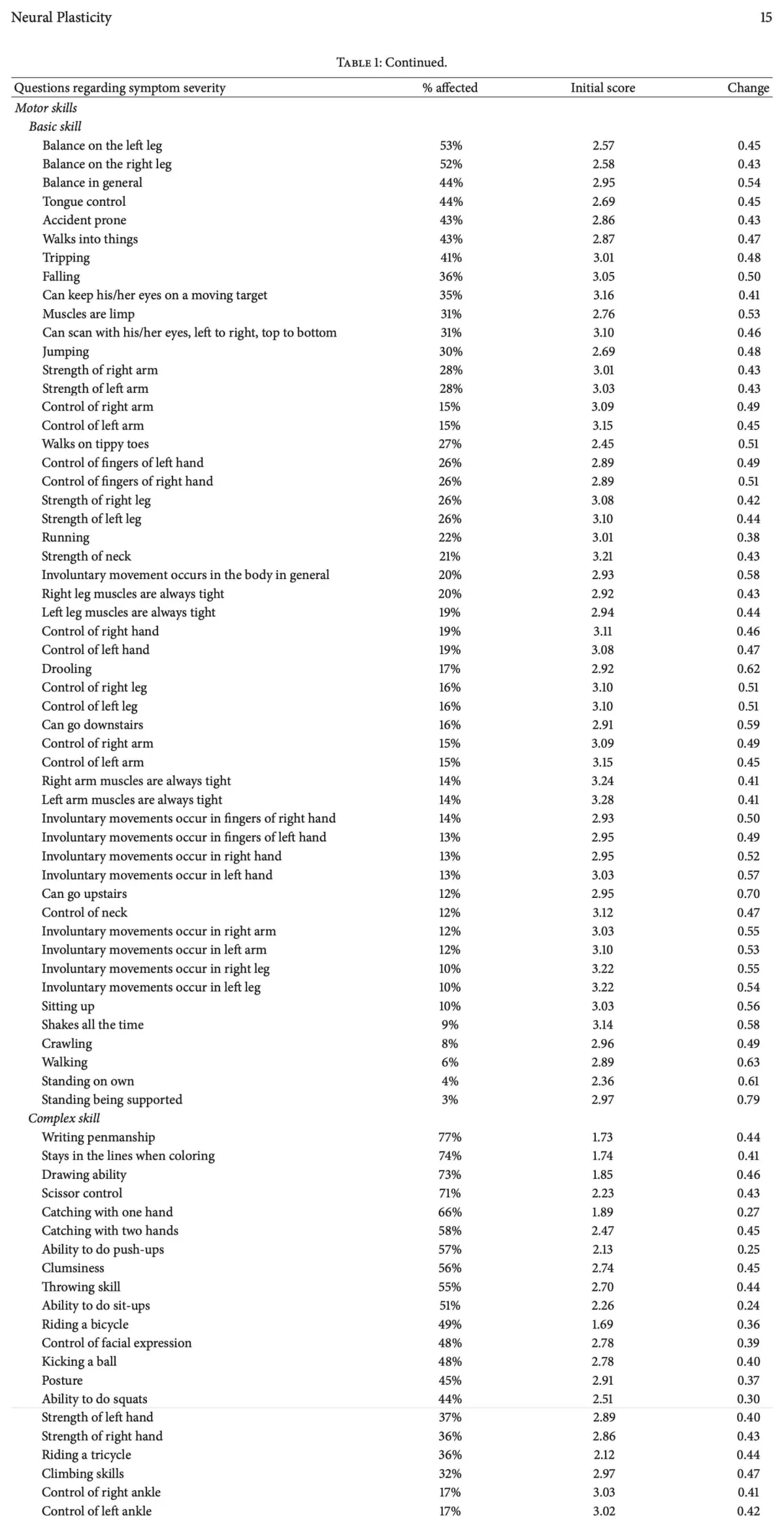
Better Sleep Patterns
Sleep disturbances are common in individuals with AS. Our program includes sensory activities that help regulate the brain’s sleep-wake cycle, promoting better sleep quality and duration.
Below are the improvements measured in sleep patterns in 1,002 children aged 1 to 18, after 6 months of Sensory Enrichment Therapy. The study was published in Neural Plasticity in 2016.
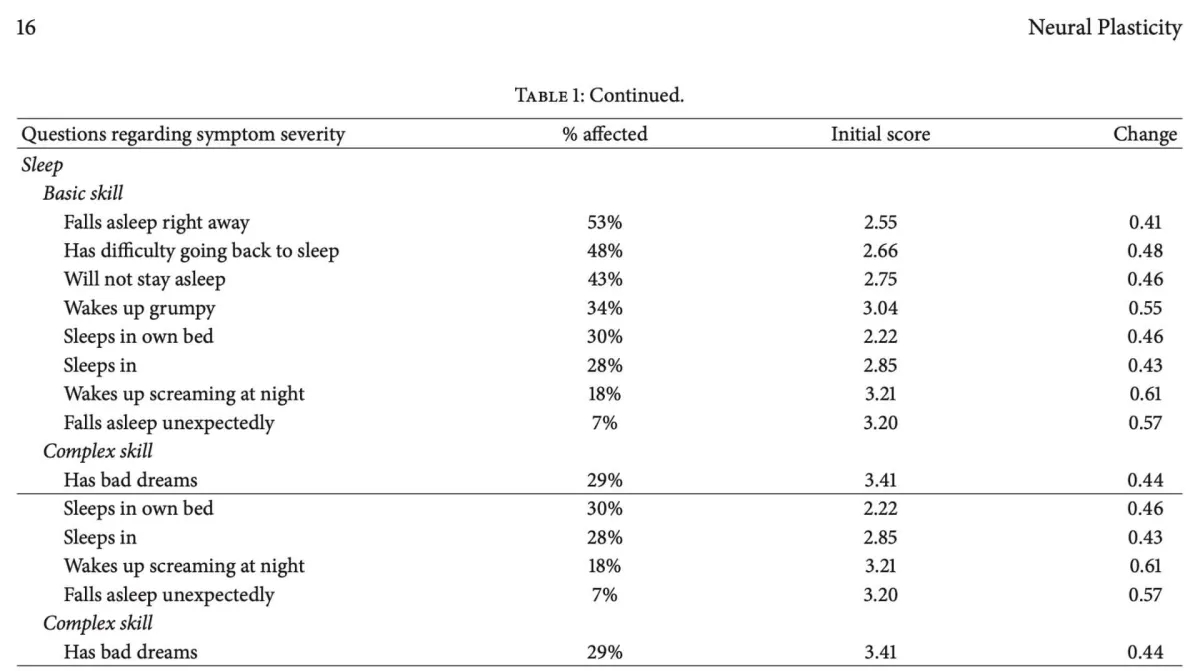
Reduced Anxiety and Behavioral Challenges
Individuals with Angelman Syndrome may experience heightened anxiety and behavioral issues. Sensory Enrichment Therapy helps calm the brain by regulating sensory input, leading to a more balanced emotional state and a reduction in challenging behaviors.
Below are the improvements measured in anxiety and behavior in 1,002 children aged 1 to 18, after 6 months of Sensory Enrichment Therapy. The study was published in Neural Plasticity in 2016.
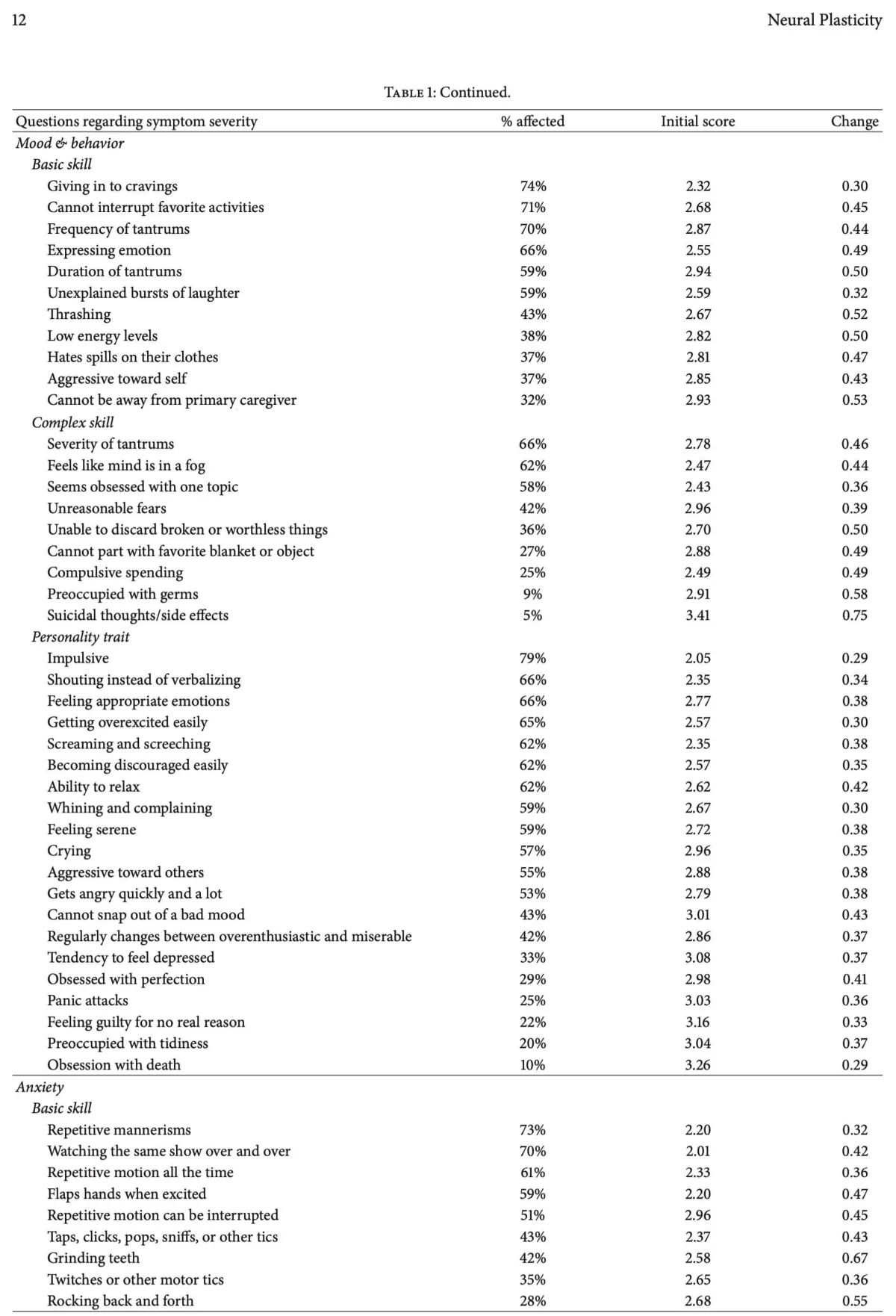
Ready to Get Started?
Why not schedule a Free Consultation?
What if there was a way to support your child’s brain and finally help them with all of that…
…with a full money-back guarantee!
3,000+
Join 3,000+ other families who have also followed Mendability's Sensory Enrichment Therapy!
“This is really working! My toddler has started using functional language!
His cognition has improved, his motor skills are getting way better, he is finally starting to climb and point and wave and able to copy signs. He has been blossoming intensely, really catching up at a faster rate. Now we have SO much hope!”
– Melissa M. (New Zealand)
parent of a 3-year-old boy
“I think that [my son] is responding great to the therapy! He definitely seems to be following instructions better across the board and is just a little more aware of the world around him.
We have also seen some improvements in speech, pronunciation, eating, handwriting and overall function.”
– Sara J. (California)
parent of a 4-year-old boy
“I went to the library where we spent about 2 hours, and both of the girls were happily reading while staying in their seats. In our prior visits, the oldest one just roamed and ran around the library while I chased her. This time, I was pleasantly surprised by how long my oldest daughter (4) sat and stayed focus on reading. This has never happened before!”
– Mary M. (Texas)
parent of a 4-year-old-girl

The top 5 areas where parents report the most improvements in the first few weeks are Sleep, Eating, Social Skills, Attention and Sensory Processing
2011 - 2025 © Mendability - All Rights Reserved
